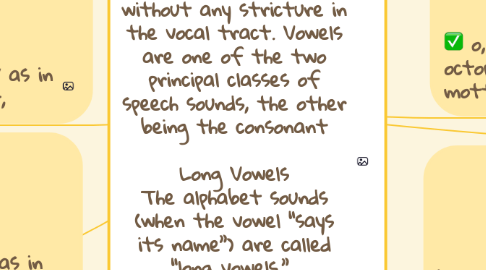Vowels: A vowel is a syllabic speech sound pronounced without any stricture in the vocal tract. Vowels are one of the two principal classes of speech sounds, the other being the consonant Long Vowels The alphabet sounds (when the vowel “says its name”) are called “long vowels.” We call them ‘long’ because we hold them longer than the short sounds
por Jefferson Stip MEJIA MONTOYA


